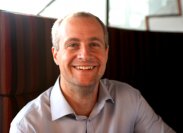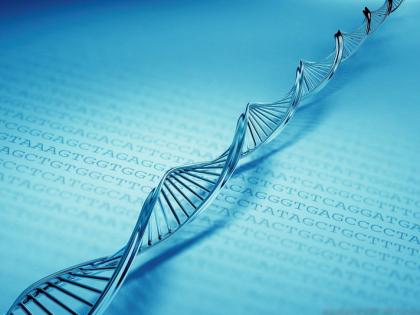An obvious lesson from many years of research into conditions such as cancer, TB, liver and heart disease is that there is simply no one single cause or cure. The systems of the human body - and biology in general - are simply too complex, and we are only just now becoming able to deal with them.
Biologists have always struggled to analyse the complexity of life. But the problem got bigger with the human genome project. Under the guidance of biologists, thousands of robots read the whole human genome and supercomputers crunched the data to reveal the three billion or so letters in our genetic code, and the 32,000 or so genes that define a human being. What once took 10 years at the cost of $3 billion to map the human genome of one person, now takes 1 hour at the cost of $3,000.
If we could identify a unique genetic signature for every disease, it would be possible to enable the prediction of outcomes. It has become more and more apparent that disease conditions can take different paths depending on the genetic environment, demanding different treatments – what is now called personalised medicine.
Centenary is using bioinformatics approaches to probe for such signatures through collaborations with our scientists and clinicians. This computational discipline borrows from mathematics, statistics and computer science in turbo-charging the research process. It allows the discovery of patterns where the human mind sees noise, and it allows the discovery of new diseases where the human mind sees uniformity.
The Bioinformatics Group, led by Dr William Ritchie (pictured below), has been able to identify genes involved in blood cell development with the Gene and Stem Cell Therapy program. The particular genes uncovered were not known to do anything until computer analysis found the connection. This work will help us understand the mechanisms of leukaemia and eventually provide new, personalised approaches to therapy.

Bioinformatics has transformed the speed of medical research from years to a day - from making impossible findings possible. It enables researchers to understand the basis of many of the world's most confronting medical research questions including cancer, heart disease, diabetes, tuberculosis and liver cirrhosis.
Dr Ritchie’s group have made a novel discovery that allows them to detect new microRNAs in human cells. MicroRNAs are miniscule pieces of DNA often termed ‘micro-managers’ as they control the fate of thousands of genes - genes that are responsible for numerous cancers, neurodegenerative diseases and heart disease. Finding microRNAs is nearly impossible given they are thousands of times smaller than normal genes and have completely different sequences.
This code-breaking method called ‘Markovian Chains’ was used to crack the Enigma code during WWII. By applying this code to Human Genome sequences, we can find unusually frequent patterns in the DNA code and have substantially increased the probability of finding ‘micro-managers’. Having successfully applied this technique to bacteria and viruses, we are going to apply this technique to human genomes.
Centenary’s Bioinformatics group has also helped our Vascular Biology group to unearth a compound which can stem internal bleeding from blood vessels after a stroke or heart attack. This compound emerged from a study of microRNAs, fragments of genetic material involved in regulation.
Another breakthrough was made during a 20-minute computer experiment that saved years of research. Bioinformatics helped our Molecular Cardiology group to track the changes in the levels of microRNAs during the course of a genetic heart disease known as hypertrophic cardiomyopathy - a disease affecting one in 500 young people. This work will lead to new ways of diagnosing and treating this devastating condition.
Today, practically every research laboratory at Centenary is generating gigabytes of data for analysis. The Bioinformatics group have set up a supercomputer and data cloud that allows researchers to quickly see if anyone in the world has already done experiments in the organ or tissues in which they are interested.
Before we had the Bioinformatics group, it would take up to eight months to analyse the results of one experiment. Now, it only takes two weeks to get the answers we need to move on to the next step.
This new and critical approach to medical research requires specialised scientists in the field, state-of-the-art technology and resulting exponential growth in computer storage. It’s an area of research that will need to grow to accommodate both advances in science as well as increased demand for personalised medicine.
You can help speed up the pace of our medical research. By making a donation to Centenary you can help to bring new therapies and treatments to light faster, saving countless people from suffering through supporting our research.
Bioinformatics is critical to the development of personalised approaches in medicine. It empowers clinicians to use the right drug for the right person, it empowers families by giving a more accurate forecast for cures, and it empowers the researchers in their targets for drug discovery. These essential components ensure that findings are translated into better patient outcomes in areas such as heart disease, cancer, liver and diabetes, to name a few.








 Agree (0)
Agree (0) Disagree (
Disagree (











__small.png)










